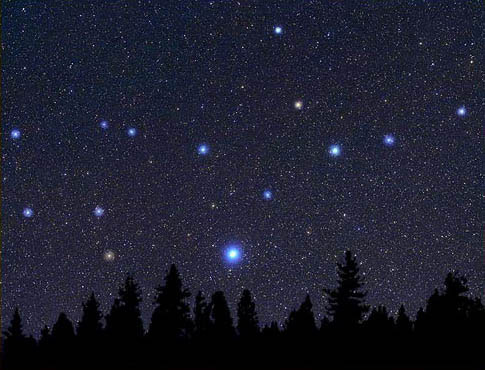We believe the heliacal rising of Spica — the brightest star in the constellation Virgo — may have heralded the Egyptian harvest season. Actual observations determine the heliacal rising of any object; clouds, for example, can delay a sighting. In the clear desert air of ancient Egypt, we assume Spica — a 1st-magnitude star — would first become visible when it achieves an altitude of 7° at the beginning of civil twilight, when the Sun lies 6° below the horizon. The Sun moves eastward about 1° each day, however, so a couple of degrees change in altitude would translate into a difference of only a couple of days in Spica’s heliacal rising.
In 6000 B.C., around the time agriculture started to flourish, Spica’s heliacal rising occurred around July 10. This would have been timed perfectly to signal the beginning of the harvest season. Spica may also have played a role in the conception of the Djed-Pillar: an Egyptian fetish symbol that likely first appeared as part of a simple harvest ritual. Inscriptions and scenes of worship preserved in the Building Texts at the Temple of Edfu seem to connect the Djed-Pillar’s origins to sky observations — and Spica’s association with the harvest could have been key.
Although Sirius shines some 10 times brighter than Spica, other aspects of Virgo’s luminary would have stood out. First, Spica lies along the ecliptic — the apparent path of the Sun across the sky — a fact that would not have been lost to the Sun-worshipping Egyptians. Second, Spica is the bluest naked-eye star. Blue was an important color to the Egyptians. Pharaohs prized the deep-blue gemstone lapis lazuli, and many of the treasures found in their tombs made use of it.
Finally, Spica was one of the most prominent stars in ancient Egypt. Of the four bright bluish stars visible from ancient Egypt, Rigel reached a maximum altitude of just 20°, Beta Centauri peaked at 40°, and Alpha Crucis climbed to 45°, or about halfway to the zenith. Spica, on the other hand, achieved a maximum elevation of 85°, so it passed nearly overhead. The combination of prominence, color, and the time of its heliacal rising argue that the ancient Egyptians may have revered Spica.










